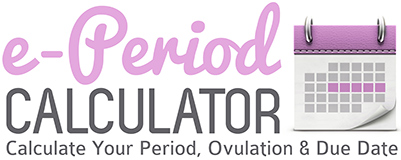You’re heading towards the final weeks of your pregnancy when you feel it: something feels like it’s tightening in your abdomen, a slight pain or squeezing twinge. You panic, thinking that you are soon going into labor, and head to the hospital weeks before your due date.
It turns out these contractions you were feeling weren’t actually the contractions you feel during true labor. These were Braxton Hicks contractions, false preterm labor signs that are often confused with real labor signs.
Braxton Hicks contractions are intermittent uterine contractions that are common in pregnancies. They usually start about six weeks into the pregnancy, although they are barely noticeable at that time. These contractions typically don’t become palpable until mid-pregnancy, when they begin to cause some discomfort in the lower abdominal area, although they are normally painless and happen sporadically.
Braxton Hicks contractions cause no changes in the cervix, whereas true labor contractions will work to thin the cervix and dilate it, causing contractions to become more intense and frequent. Braxton Hicks contractions tend to occur more often as your pregnancy progresses, which tends to lead some women to intermix them with real labor signs.
Braxton Hicks contractions have dissimilar characteristics than true labor contractions. They are described as contractions that cause tightening in the abdominal area, and are usually sporadic. They come and go and will often feel like mild menstrual cramps. Braxton Hicks contractions are usually painless. Unlike true labor contractions, they don’t happen regularly and don’t get more frequent and closer together as time goes on. Braxton Hicks contractions also don’t continue to last longer as they go, increase during walking, or become more intense over time.
How Can You Distinguish?
1. Where is the pain coming from?
Braxton Hicks contractions typically manifest in the form of a tightening around the abdominal area. Pain that begins in the lower back area and then later moves towards the abdomen, or vice versa, is characteristic of true labor pain. Similarly, lower back pain that comes and goes, and pressure in the pelvis, are other signs that these are labor pains.
2. What is the pain like?
Braxton Hicks contractions are usually not painful, but you may feel a discomfort or feeling of tightness in the area that they are occurring. True labor pains will be outright painful, and will increase in intensity as time goes on.
3. Regular or irregular?
Braxton Hicks contractions are irregular, they do not get closer together with time, and they happen sporadically. Real labor pains will be regular contractions and will steadily get closer together, and will increase to less than 5 minutes apart. If your contractions are happening sporadically with no real regular pattern, then they are likely Braxton Hicks.
4. Can you walk?
Braxton Hicks contractions will usually ease when you start moving. With true labor pains, walking and other movements will likely increase the pain as you go. Try shifting your position, standing up and walking to see what changes in your contractions.
5. How far along are you?
If you are under 37 weeks pregnant, you are likely experiencing Braxton Hicks contractions. After 37 weeks, the contractions you are experiencing may be signs of early labor, and you should contact your doctor for instructions.
So what should you do if you’re still unsure?
If you still can’t tell whether the contractions you’re experiencing are real, call your doctor to help you identify if the signs are an indication of true labor. For women in their first pregnancies, false alarms are common and happen often so don’t worry about asking for advice. If you feel abdominal pain or menstrual-like cramping that is becoming more frequent and rhythmic before you are 37 weeks pregnant, youshould immediately call your doctor if you notice signs of premature labor, especially if you experience vaginal bleeding at any time.
The good news is that Braxton Hicks contractions are normal, and can be relieved through numerous activities. Taking a walk can help ease the pain and loosen you up. Relaxing and getting some rest can help soothe the severity of the contractions, as well as taking a warm bath or getting a massage.



